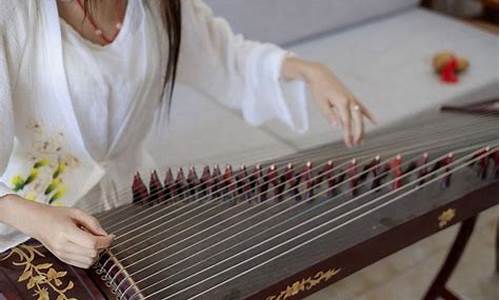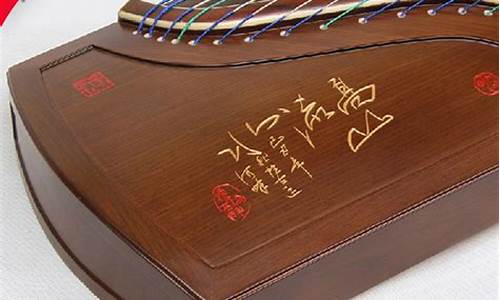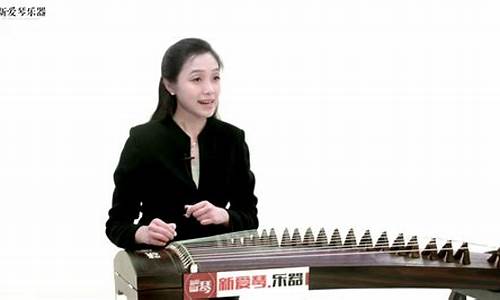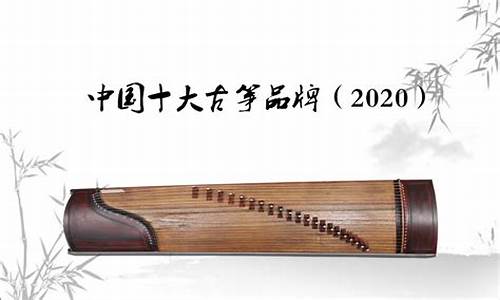古筝介绍英文简短带翻译_关于古筝的英语翻译
1.学古筝三年级英语日记带翻译
2.英语作文我的业余爱好带翻译40字
3.关于中国传统乐器的分类简介 请您帮忙用英语翻译一下
4.英文自我介绍(中文解释)
5.求专业英语翻译一句话:浅论古筝琶音与扫摇技巧的运用 ——以《幸福渠水到俺村》为例

没有你的个人情况怎么写自我介绍。
Hello, everyone! Glad to meet you. My name is Zhang XX. I am thir. I am a very outgoing girl.I don't think I need to describe how I look because you can see. Then I just talk about something else. I he five members in my family. My father is a manager. My mother is a deputy manager. Of course they are in different companies. My grandparents are both retired. I love to play the Guzheng. You know? It is a kind of traditional musical instrument in China. I even he got a certificate for that. Though I like music, my dream is to become a police officer because I think I can help others.
翻译:大家好,很高兴见到你们。我叫张XX,今年13岁(此处省去了你说的外貌描写,因为在英文自我介绍中一般没有描述自己外貌的的,而且,外貌别人是可以看到的,对吧?所以后面用了一个幽默的说法)。我是一个性格外向的女孩。我想我不用描述我长的怎样了,因为你们都能看到(此处即是幽默的说法,可以向面试官展现出孩子的聪明才智)。我就说些别的内容吧。我家里有5个人。我爸爸是一名经理,我妈妈是一名副经理(如果孩子认为deputy这个词很难,可以干脆说 My mother is also a manager也未尝不可)。当然咯,他们可不在一家公司(此处也是幽默的说法)。我的爷爷奶奶都已经退休了。我的爱好是弹古筝。古筝是中国的一种传统乐器。我还获得了一张古筝的证书呢(级别并不重要,面试官并不了解你所说的级别到底有多高,只要知道你有就可以了)。虽然我喜欢音乐,但我的梦想是成为一名警察,因为那样我就可以帮助别人了(此处加了一点点内容,使语义上显得连贯)。
你可以根据孩子的情况再酌情修改。
学古筝三年级英语日记带翻译
Hi everone,my name is ***,I am ** years old this year.I study in class ** of the ** school.I am a optimistic person. I often helping each other to classmate,we study together and improve together. We live in the same class collective, we are like the brothers and sisters each other. There are a lot of my interest,example:reading,watching at the film,play by ancient Zheng and so ons.....I especially like watching at the animation, particularly watching Japanese animation,the animation which I like is <prince of tennis>.
This is about me,what do you thing?
大家好,我叫***,今年**岁.现就读于**中学,**班.
我是个性格开朗的人,经常与同学互帮互助,共同学习,共同进步.我们生活在同一个班集体中,我们彼此就如兄弟姐妹一样.
我有许多的兴趣爱好.比如:看书,看动画,看**,弹古筝,等等...我特别喜欢看动画,尤其是日本动画片,我最喜欢的是<网球王子>.
这就是我,你觉得怎样呢?
**部分可以换成你喜欢的
不懂继续追问,望纳,谢谢。
英语作文我的业余爱好带翻译40字
学古筝三年级英语日记带翻译
在暑开始时,我就开始在英杰教育学古筝,每个星期日或星期六我都去学一次,其它日子我只是去把刚学的练一练,手指好难摆动的。刚刚学的时候,身体好难受,不过老师对我很热情,关心,我现在可以弹一些曲子,我在那里无聊的时候,那里的老师就和我一起玩,那里有好多和我年龄一样大的孩子,有的`学画画,有的学钢琴,等等好多人。我在那里还可以跟其他学生学另外的艺术,比如钢琴,二胡,画画,等等,他们很像小老师,在指导我。
At the beginning of summer vacation
I began to learn guzheng in Yingjie education. Every Sunday or Saturday
I go to learn it. On other days
I just practice what I just learned. Fingers are hard to swing. When I was just learning
I was very sick
but the teacher was very warm and concerned about me. Now I can play some music. When I was bored there
the teacher there played with me. There were many children as old as me
some learning to draw
some learning to steel piano
and so on. I can also learn other arts with other students there
such as piano
erhu
painting
and so on. They are very like little teachers
guiding me.
可现在我才上来5节课,还不是太熟,不像老师只看一遍就会弹了,我也好想像老师那样的熟悉而我好像非常生疏一样。
But now I only e up with five classes
which is not very familiar. Unlike the teacher who can play only once
I can also imagine that I am as familiar as the teacher and I seem very strange.
不过呢我要继续努力,争取超过老师,自己也会当一个小老师,以后我会每天都好好地练习,把它给打败。
However
I will continue to work hard to surpass the teachers and bee a little teacher myself. I will practice hard every day and beat it.
关于中国传统乐器的分类简介 请您帮忙用英语翻译一下
My hobby
My hobby is listen to music,like pop music,jazz,violin,piano,guita,hip pop,Chinese Zheng,sing the songs,draw the picture,jog,reading books,like essay,art books,reader magazine,play pingpang,watch some kinds of movies,like:drama,the living theatre,melodrama,about history,about trel,less time about love.Acutally,delicious food also is my forite.Still also about trel.
我的爱好
我的爱好是听音乐,像是流行音乐,爵士,小提琴,钢琴,吉他,古筝,唱歌,画画,慢跑,读书,像是散文,艺术书籍,读者杂志,打乒乓,看一些种类的**,像是喜剧,生活剧,音乐剧,关于历史的,关于旅游的,很少的时间我看关于爱情的。当然,美食也是我的最爱。还有关于旅游的。
英文自我介绍(中文解释)
CHINESE MUSICAL INSTRUMENTS
There are many deep traditions of the bowed, plucked, wind, and percussion instrument families, and many in these families of instruments are listed here below. These instruments are used for traditional music, classical music, folk music, and modern music and compositions (there are also many other older instruments used by the many Minority groups in China). (NOTE - all of the tunings listed in the bowed and plucked instruments are from the lowest pitched strings to the highest - and the word "qin" 琴 means "instrument"):
Bowed Instruments:
1.Erhu 二胡 - the Chinese two string violin with metal strings, tuned a fifth interval apart, to D and A, or sometimes to C and G. "Huqin" is the name for this family of Chinese bowed instruments; and "qin" is the general name for an instrument. It is called nanju (or the nanhu 南胡 ) by Cantonese and Taiwan people..
2.Jinghu 京胡 - the Beijing Opera two string violin pitched one octe above the erhu. The soundbox is made of bamboo and the strings are usually metal; traditionally the strings were silk, and silk strings are occasionally still used. The strings are tuned a fifth interval apart.
3.Gaohu 高胡 - the soprano version of the two string erhu, tuned a fourth interval higher than the erhu, with metal strings tuned a fifth interval apart.
4.Zhonghu 中胡 - the deeper "viola" version of the two string erhu, with metal strings tuned in fifth intervals; and tuned a fourth or a fifth lower than the erhu.
5.Gehu 革胡 - the deeper "cello" version of the two string erhu, with metal strings tuned a fifth interval apart. Bei gehu 倍革胡 is the big deeper "bass" with four metal strings tuned in fifth intervals.
6.Sihu 四胡 - an erhu type instrument with four silk strings tuned in fifth and fourth intervals, to C-G-C-G, or D-A-D-A. It sounds much like the human voice, and it has a bow which has two simultaneous bowing parts.
7.Dalei 大擂 - an erhu type instrument with the soundbox made of copper, tuned lower than the erhu, also sounding much like the human voice, with two metal strings tuned a fifth interval apart; traditionally they were tuned a fourth interval apart.
8.Banhu 板胡 - a loud erhu type instrument made of coconut, with two metal strings tuned in fifth intervals.
9.Nanju (or the Nanhu 南胡 ) - the Cantonese opera erhu, with two metal strings tuned a fifth interval apart.
10.Matouqin 马头琴 (or in Mongolian, the Morin Huur, the Morin Khuur, the Morin Xuur, the Morin Khor, or the Marinhur, or the Chaoer in eastern Mongolia), the Mongolian deep sounding two string bowed instrument that got its name from the carved horse head by the tuning pegs, with nylon or metal strings, and traditionally with horsehair strings, and they are tuned a fifth interval apart. There are three different sizes, like the Western violin, viola, and cello. Traditionally in eastern Mongolia the fingerboard is played normally like a violin, and the instrument is also called the Chaoer, but in western Mongolia, traditionally the string is played where the bottom of the nail meets the skin of the finger, so that the sound is produced with both the nail and the finger. Di Matouqin 低马头琴 - the bigger and lower pitched Matouqin, also tuned in fifth intervals.
Plucked Instruments:
1.Pipa 琵琶 - the four string Chinese fretted lute, with metal strings, and occasionally with silk strings. It is tuned G-C-D-G, or A-D-E-A.
2.Liuqin 柳琴 - the small pipa, the Chinese fretted lute, with three or four metal strings. It has either three strings tuned G-D-G, or four strings tuned G-D-G-D; and the four strings can also be tuned in fifths like a Western violin, to G-D-A-E.
3.Yueqin 月琴 - also called the "moon guitar", played with the Beijing Opera, a banjo-like fretted instrument with three or four metal strings. It is tuned A-D-A, or G-C-G, or D-A-D, or C-G-C; or with four strings, it is tuned D-A-D-A, or C-G-C-G.
4.Ruan 阮 - similar to the yueqin, but it has a hollow soundbox and a longer neck. It has three or four metal strings and is fretted. Xiaoruan 小阮 has three strings tuned D-A-D, or four strings tuned D-A-D-A. Zhongruan 中阮 , the medium lower ruan, has four metal strings tuned D-A-D-A, or to G-D-G-D; or tuned in fifth intervals like the Western cello to C-G-D-A, and it is fretted. Daruan 大阮, the big bass ruan, is traditionally tuned D-A-D-A, and in modern times it is also tuned in fifth intervals like the Western cello C-G-D-A, and it is usually bowed.
5.Sanxian 三弦 - the three string unfretted lute with metal, or gut, or nylon strings, with a long neck and made of snake skin. This instrument is also played in Japan, and it is also the main instrument for traditional music in Okinawa. It is tuned C-G-C.
6.Yangqin 扬琴 - the hammered dulcimer, called the "Butterfly Harp."
7.Guqin 古琴 - (or the qin), the ancient seven string Chinese zither with metal strings wred with nylon, played by sliding the fingernail up the strings. It originally had five strings, and was called the qin, meaning "instrument," or "stringed instrument"; and the term "gu" means ancient. The standard tuning (listed in the key of C) is G-A-C-D-E-G-A. Another very common tuning (for the key of F) is C-D-F-G-A-C-D, and there are many others.
8.Guzheng 古筝 (or the Gu-Zheng, or the Zheng, or the Cheng), the Chinese zither/ harp with 16 to 25 strings and a moveable bridge. The 18 string and the older 16 string ones he metal strings and the 21 to 25 string ones he wire strings wred with nylon. Traditionally the older instrument had 13 strings made of silk, and that one was the ancestor of the Japanese Koto. The two most common tunings are the C pentatonic scale (C-D-E-G-A), and the G pentatonic scale (G-A-B-D-E); the pentatonic scale has the first, second, third, fifth, and sixth degrees of the scale.
9.Konghou 箜篌 - the vertical guzheng, the Chinese zither/harp, somewhat like a Western harp, with four pedals, and it usually has five or six octes. It has metal strings wred with nylon in the lower section, and the higher strings are sometimes metal.
10.Se 瑟 - the ancient 50 string zither with a moveable bridge, which is no longer played. It may he been the forerunner of the guzheng, the Chinese zither/ harp (see related article). It had silk strings.
11.Hudie Zheng 蝴蝶筝 - somewhat like two guzhengs combined, sometimes called the "butterfly guzheng", which is a recent invention, but rarely played. It has metal strings wred with nylon, and some of the high strings can be metal. It has a set of 25 strings tuned normally to a pentatonic scale on the right side (with the first, second, third, fifth, and sixth degrees of the scale - in the key of C those notes are C, D, E, G, and A), where the bridge is moveable; and on the left side of the bridge, with notes that cannot be bent (and without a moveable bridge), a set of strings is tuned in half steps to all twelve chromatic Western pitches within the octe; also the left side has some pairs of strings that are tuned to the same notes that correspond to the notes of the strings on the right side of the bridge that are in the pentatonic tuning.
12.Khomuz (or the Koxianqin 口弦琴) - the Mongolian jaw harp with one or two metal reeds, played by holding it in the mouth and changing the tones with the mouth city.
13.Duxianqin 独弦琴 - an old one string instrument with a metal string supported by a wood bow, played by plucking the string and bending the wood bow.
Wind Instruments:
1.Xun 埙(or the Huin, or the Hsuin, or the Hsun) - a clay wind instrument with eleven holes. It was revived by the Guzheng master Cao Zheng in the early 10s, and it became very popular again in 1998.
2.Dizi 笛子 - the horizonal side-blown bamboo flute.
3.Xiao 箫 (or the Hsiao) - the vertical bamboo flute.
4.Paixiao 排箫 - Chinese pan-pipes.
5.Sheng 笙 - the bamboo mouth organ, blown both in and out. It was the ancient ancestor of the Western harmonica. Diyinsheng is the big mouth organ with 48 pipes.
6.Hulusi 葫芦丝 - made of bamboo or another plant such as straw grass, and played like a mouth organ, blown both in and out. Shuangguan Hulusi is the double-reed hulusi.
7.Bawu 巴乌 - the small and deeper sounding bamboo flute.
8.Guanzi 管子 - the short cylindrical-bore oboe type older flute, made of wood. Shuangguan 双管 is a double-pipe flute made of wood.
9.Suona 唢呐 - Chinese trumpet, further specialized into gaoyinsuona, the soprano trumpet; zhongyinsuona, the lower trumpet; and diyinsuona, the bass trumpet.
这样应该挺详细的吧,嘿嘿·
求专业英语翻译一句话:浅论古筝琶音与扫摇技巧的运用 ——以《幸福渠水到俺村》为例
Hello, everyoine, my name is Xue Yue Sun. I am twelve years old and a current year 6 student of Shi Yang Primary School. I was born in the tiger year. I am a girl who loves to laugh. My hobbies are: singing, painting/drawing and playing the Zheng. I am interested in Japanese language and music is essential in my life. This is me.
希望对你有帮助~
天上~
注:古筝可以翻译成:a 21-or 25-stringed plucked instrument in some ways similar to the zither 但是太麻烦,就用了另一种翻译:Zheng.
About the arpeggio and the exertion of sweeping-strum technique in instrument Guzheng--Take "At Our Village Arrives the Hy Irrigation Ditch" as example
声明:本站所有文章资源内容,如无特殊说明或标注,均为采集网络资源。如若本站内容侵犯了原著者的合法权益,可联系本站删除。












